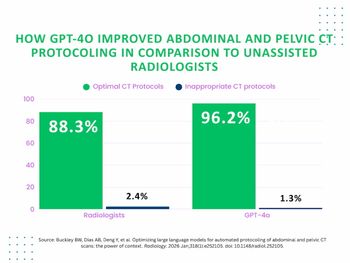
Siemens launches High Definition PET
Siemens is framing its latest version of PET technology as the modality’s equivalent to high-definition TV for its ability to “redefine” the quality of molecular imaging.
Siemens is framing its latest version of PET technology as the modality's equivalent to high-definition TV for its ability to "redefine" the quality of molecular imaging.
As the Society of Nuclear Medicine meeting began this week, company executives supported the comparison with claims that the technology provides consistently sharp and clearly defined images across the entire field-of-view, from the sweet spot of the PET scanner to the fringes of its 70-cm bore.
The key is proprietary software that optimizes the elements of image uniformity, resolution, and contrast.
High Definition PET will transform the entire line of Siemens PET/CTs, the Biograph TruePoint systems, promising improved specificity and accuracy, with the ability to identify lesions just 2 mm across and spot early signs of cancer in the lymph nodes, abdomen, head and neck, and brain. This offers the potential to allow earlier, more targeted treatment, according to Michael Reitermann, president of molecular imaging at Siemens Medical Solutions.
The concept behind the new reconstruction technique is nothing new. The idea goes back decades, but it was never practical before, Reitermann said.
"Our people came up with the implementation to make it clinically usable, so that the reconstruction process does not change workflow," he said.
The improvement in resolution is made possible by optimized algorithms. Calculations that had once taken hours to perform have been collapsed to minutes through advances in computing hardware and memory.
Siemens executives refused to put a price tag on the new technology, which will be an option on all Biograph TruePoint systems shipping by the end of the calendar year. A field upgrade will be available to the installed base of Biograph users early next year.
The technology increases the uniformity of resolution throughout the field-of-view, according to David Townsend, Ph.D., director of the molecular imaging and
translational research program at the University of Tennessee, who helped Siemens develop and test HD-PET.
Typically, the intrinsic image quality of PET images deteriorates as the point of imaging moves away from the center of the scanner, Townsend said. This does not happen with HD-PET because of a proprietary reconstruction technique that allows uniform 2-mm resolution to the edges of the field-of-view.
"One of the biggest challenges facing us is the size of our patients," Townsend said. "Our average patient is 200 pounds. So having better resolution and better signal to noise is very important."
The improved image quality could translate into better clinical outcomes for cancer diagnosis, disease staging, treatment, and postsurgery/postradiation monitoring, according to Townsend.
"With this you could detect early recurrence or lack of response," he said.
HD-PET can also improve the accuracy of radiotherapy planning by providing better detection of the true extent of the lesion, and the clarity possible with the technique should improve the precision of assessing patient response to therapy. Diagnosticians will be better able to find evidence of early recurrences of head and neck malignancies, especially in postoperative and postradiation patients with distorted anatomy.
HD-PET promises to improve the delineation of early axillary lymph node metastases in primary breast cancer and the depiction of nodal and chest wall recurrences in post-treatment patients referred for restaging, according to the company. It might also enable doctors to identify questionable hilar and mediastinal nodal metastases in lung cancer, especially in postradiation therapy, and postsurgery conditions associated with fibrosis, effusion, and pneumonitis.
The technique will allow better depiction of some of the most difficult and important lesions to visualize, such as small abdominal lesions, small retroperitoneal lymph node metastases including testicular tumors, and cervical and uterine malignancies.
"It's important to visualize the abdomen, because we must decide on this basis between surgical, chemo, and radiation therapy," said Dr. Rodney Hicks, director of the Centre for Molecular Imaging at the Peter MacCallum Cancer Centre in Melbourne. "It's important to identify all the lymph nodes (with cancer), to include them in radiation treatment. When we don't, we see recurrence on the margins."
Newsletter
Stay at the forefront of radiology with the Diagnostic Imaging newsletter, delivering the latest news, clinical insights, and imaging advancements for today’s radiologists.




























